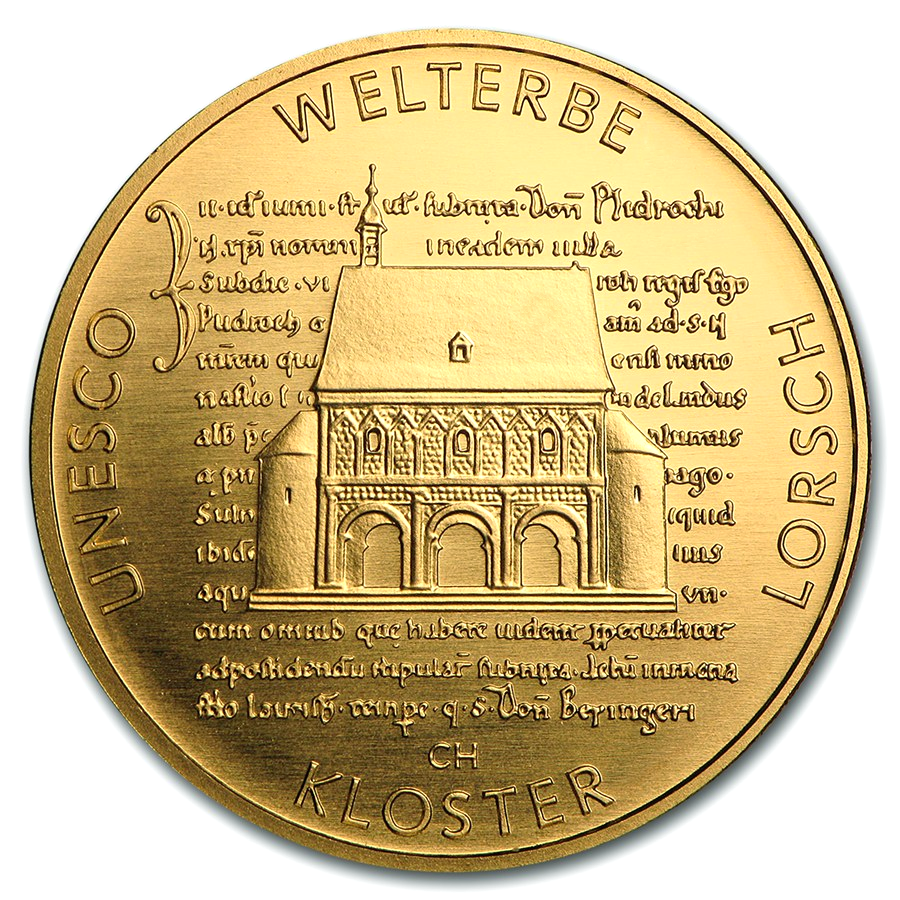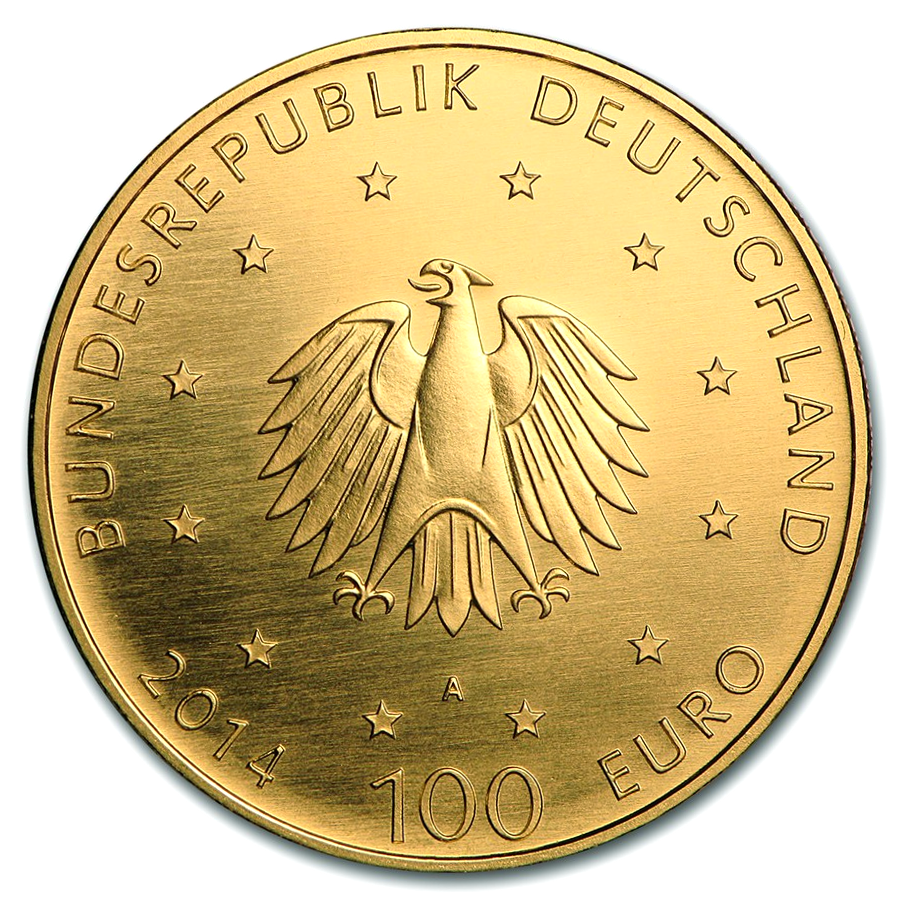100 Euro Lorsch Abbey 1/2oz Gold Coin 2014 | Germany
In 2014, the 100 Euro Lorsch Abbey commemorative coin was published. It is the eleventh edition of the popular gold coin series that show motifs of famous historical places of UNESCO World Heritage sites in Germany.
In 1991 the Abbey was added to the UNESCO World Heritage site and is recognized as one of the most important historical buildings in Germany. The 100 Euro Lorsch Abbey celebrates a piece of German history an is an excellent gold coin for both investors and collectors.
Fine Weight, Fineness and Details
The 100 Euro Lorsch Abbey gold coin is produced with the fineness of 999.9/1000, and a fine weight of 1/2oz, which exactly corresponds to 15.55 g fine gold. It has a mintage of 220,000 pieces.
The production of the gold coin took place in equal numbers at five German mints in Berlin (A), Munich (D), Stuttgart (F), Karlsruhe (G) and Hamburg (J).
Appearance
The design comes from the hamburger artist Frantisek Chochola. Frantisek Chochola is an artist who is mainly known for his designs of several editions of the "Goldeuro German Forest" series.
Front:
The Lorsch Abbey in today's South-Rhine district Bergstraße was a Benedictine abbey founded in 764. The Abbey was an important center of medieval cultural and intellectual life. The royal hall of the building is one of the best preserved architectural testimonies of the Carolingian period in Germany.
The motif depicts the West wing of the gate hall of the abbey in front of a section of the "Lorsch Codex" with 14 lines to see. The words "UNESCO WELTERBE" and "KLOSTER LORSCH" can be seen as a transcription.
Back:
The reverse shows the coat of arms of the Federal Republic of Germany as the main motif. On the left and right of the Federal Eagle, six stars are arranged in a semicircular shape, which represent the European Union.
Directly above the eagle, is the mint mark of the issuing mint (A, D, F, G or J). BUNDESREPUBLIK DEUTSCHLAND, the year of issue "2014" and the nominal value "100 EURO" is stamped below the image.
History
The Lorsch Abbey is one of the most important monastic institutions of the Carolingian period. The Lorsch Abbey was first documented in 764. In the course of time, the abbey was constantly expanded and modified. In 772 the monastery was transferred to the Frankish King Charles. Subsequently crowned as emperor, Charles the Great, elevated the monastery to one of the most important imperial monasteries.
The abbey and basilica were renamed in honor of Saint Nazarius and then consecrated by the archbishop of Mainz in 774. Rebuilt several times, it is nevertheless the best preserved testimony of early medieval architecture under Roman-antique influence. Inside, it also contains remains of Carolingian, Romanesque and gothic wall paintings.
After the incorporation of the monastery into the archbishopric of Mainz in 1232 the abbey went through many feuds and a number of wars. This eventually led to the dissolution of the monasteries during the course of the Reformation in 1556.
In the Thirty Years' War the abbey church was destroyed and the hall was used as a store. In 1623 the Archbishop of Mainz regained possession of the abbey and the region returned to the catholic faith. However, the buildings in Lorsch were destroyed and had to be rebuilt.
The Carolingian Hall, a Romanesque church fragment and the surrounding walls have been preserved from the early medieval abbey complex. In 1991 the complex was awarded a World Cultural Heritage by UNESCO.
For centuries, Lorsch was a cultural, economic and political hub in Europe. The abbey was also an important place for the preservation and mediation of ancient art and science.
Details
Name: 100 Euro Abbey Lorsch 2014
Year of issue: 2014
Country Germany
Published by: Bundesrepublik Deutschland
Diameter: 28 mm
Thickness: 1.65 mm
Fine content: 999.9 / 1000
Fine weight: 1/2oz; 15.55 g
Denomination: 100 Euros
| Metal | Gold |
| Form | Gold Coin |
| Country of Origin | Germany |
| Manufacturer | Verkaufsstelle für Sammlermünzen der BRD |
| Series | 100 Euro |
| Purity | 999.9/1000 |
| Fineweight | 15.55 gram |
| Gross Weight | 15.55 gram |
| Grade | Brilliant |
| Condition | Circulated |
| Face value | 100 Euro |
| Thickness | 1.65 mm |
| Diameter | 28.00 mm |
| Mintage | 200000 |
| Packaging | Capsule with Certificate and Etui |






